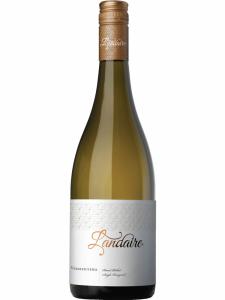-
中文名:
-
英文名:Vermentino
-
外文别名:Rolle,Favorita
-
种植区域:
-
香气:
-
颜色:
Vermentino is a white-wine grape grown in various locations around the western Mediterranean: northwestern Italy, southern France and the neighboring islands of Corsica and Sardinia. It goes by various names, among them Pigato in Liguria, Favorita in Piedmont and Rolle in Provence, although there is long-standing disagreement over which of these are synonyms of Vermentino and which are distinct varieties in their own right. Whatever the truth, Vermentino wines, Pigato wines, Favorita wines and Rolle wines have a lot in common, most obviously their refreshing acidity and attractive aromas of peach, lemon peel, dried herbs and a whiff of saline minerality.
The taxonomic confusion mentioned above is caused by uncertainty over Vermentino's genetic and geographical origins. While some authorities suggest that it came to Italy from Spain, others say precisely the opposite. A third theory even depicts the variety arriving in the Mediterranean from the Middle East, via Greece. Happily, such discussions and disagreements are entirely academic – in every sense of the word. What really matters is where the grapes are grown today, and what the wines are like.
In Liguria, Vermentino (Pigato) is the principal variety in white wines from the Colli di Luni. Here, the wines' crisp freshness and minerality echo the cool, bright landscape of the Carrara marble quarries. Just to the west, Vermentino vines are found alongside Bosco and Albarola in the dramatic cliffside vineyards of the Cinque Terre. In this visually stunning location, the variety is used to make more than just dry wines; air-dried (passito) Vermentino grapes are a key component in the sweet, nectar-like Cinque Terre Sciacchetra.
Just down the coast in Tuscany, the vineyards of Bolgheri produce some of Italy's very richest Vermentino. The Tuscan climate – warmer and sunnier than that of Liguria – combines with winemaking techniques such as skin contact, lees contact and barrel aging to create Vermentino whose weight and aromatic complexity might be compared to that of Viognier.
Across the Tyrrhenian Sea in Sardinia, Vermentino has risen to become the island's key white-wine grape. Here, the variety has its very own regional appellation, Vermentino di Sardegna, and is used to make one of the island's most highly regarded wines, Vermentino di Gallura.
Within swimming distance of Gallura are the southernmost vineyards on the French island of Corsica. Vermentino is the number one white-wine grape here too, as the key ingredient in white wines from all over the island. As either Vermentino or Rolle, it is successfully grown in the vineyards of Patrimonio, Ajaccio, Figari, Calvi, Sartene, Porto-Vecchio and on the "Cap Corse" peninsula.
100 miles (160km) across the sea from the Cap Corse, lies the Provençal coast of southern France. Here, the variety is traditionally known as Rolle, but is increasingly labeled with its more-fashionable Italian name Vermentino. Whichever name it goes by, the variety has been sanctioned for use in AOC wines only in the past 20 years or so. Previously it was restricted to Vin de Pays/ IGP wines (see French Wine Labels). Of particular note are the white wines of Bellet, which are made from at least 60 percent Vermentino.
In the United States, a few small-scale producers have begun to make Vermentino wines (mostly in California), but the variety has not yet shown signs of achieving the kind of popularity enjoyed by Chardonnay, Pinot Grigio or Sauvignon Blanc. The global, ubiquitous popularity of these three varieties has played a significant part in Vermentino's growing popularity in Australia, where several wineries have offered the variety as a refreshing alternatives to the everyday and obvious.
The variety has a dark-skinned variant, grown almost exclusively in Liguria and Tuscany. See Vermentino Nero.
Synonyms include: Rolle, Rollo, Pigato, Favorita, Malvoisie de Corse.
Food matches for Vermentino wines include:
Fried marinated sardines (sardine a scabecciu)
Thin-sliced octopus drizzled with lime
Deep-fried shellfish turnovers (empanadas de marisco)


